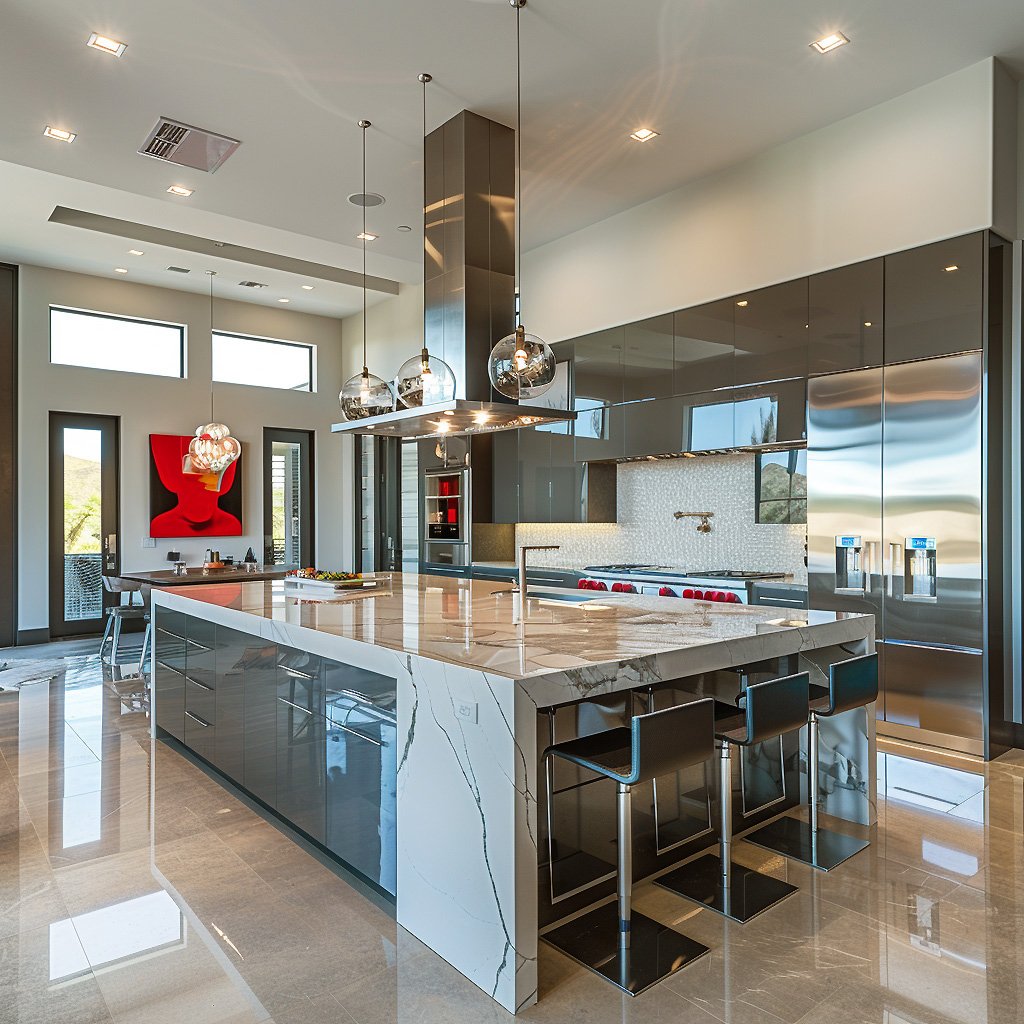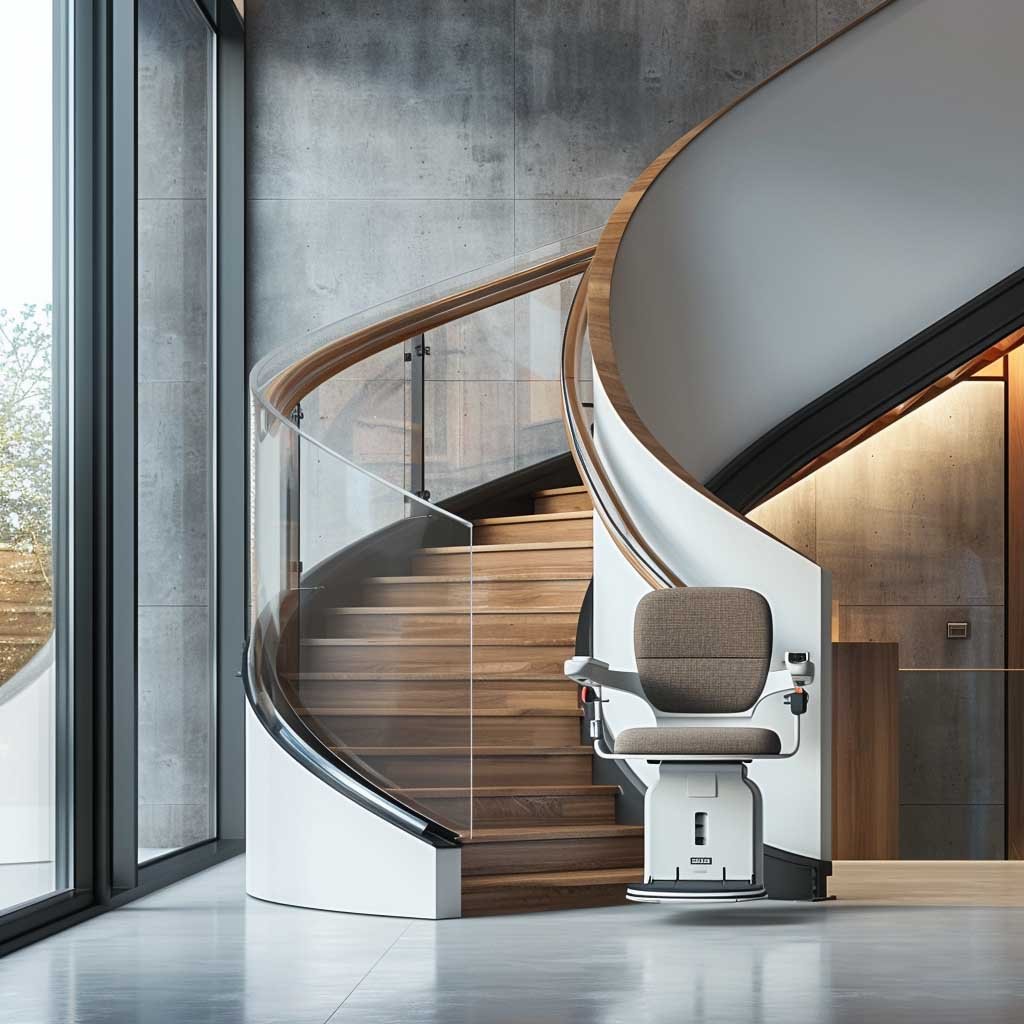
Understand The Notion Of House: How To Break From Tradition
Don't Be Tied Down To Our Old Notion Of House
Most images featured on this site are generated by MidJourney AI based on prompts created by the site owner.








Our Notion Of House hasn’t changed for a hundred years.
Welcome to today’s blog post.
The pictures above highlight common but often illogical features that are invariably accepted by our conventional notion of house. They may be ” traditional houses “. Yet, they make little sense, especially for seniors. For us, these conditions can mean the difference between safety and danger, happiness and misery. Or even whether we can stay in our homes or are forced to move. Let’s explore together the notion of house.
In my over forty years of designing and building houses, I’ve seen many instances where practical advice was ignored in favor of accepted norm. Conventional wisdom says that the value of our properties lies mainly in the land. Therefore, bigger lots are more valuable than smaller lots. And it will always pay to build the largest house possible on the lot. Even if you have to go to Committee Of Adjustment or the OMB. As a result, small houses on small lots designed for older adults are rare.
However, imagine a type of house that requires minimal maintenance. And it is built to last, well-insulated, soundproof, burglarproof, and just the right size for us to enjoy our golden years. Furthermore, we don’t have to worry about paying constant attention to it.
Such houses are almost nonexistent in the current market. Builders continue to construct multi-story houses with narrow, dangerous staircases. They contain more bedrooms than we’ll ever need. And they have more rooms than we can use. Often, the basements are dark, damp, and poorly waterproofed. All because they are accepted by buyers who already have the notion of house branded in their mind.
But this doesn’t mean we have to approve of these conventions. Let’s take a moment to consider what we truly want in a home and not just settle for what is commonly available.
What Inspire Us To Build Our Houses This Way? The Forming Of Our Notion Of House.








Each Room For A Specific Function

How Popular Culture Shapes Our Notion Of House
Builders, developers, and homebuyers often draw their inspiration from a variety of sources. These are movies, TV, magazines, vacations abroad, and visits to the homes of friends and relatives, etc. These influences can last decades. Sometimes they can originate from trends that are half a century old or more. What unites these inspirations is their foundation in popular culture, making them widely recognizable and appealing.
These cultural “hints” are then incorporated into the homes we build and buy. For instance, architectural features seen in classic films, interior design trends from glossy magazine spreads, or the memorable elements of a vacation destination can all leave a lasting impression. When developers and builders encounter these ideas, they sometimes seek to recreate them in their homes. The idea is to integrate familiar and nostalgic elements into these ‘ traditional houses ‘.
We Are More Practical As We Age
For seniors who want to stay put in their own homes, we need to take a hard look at our houses. The cultural remnants mentioned earlier may not serve us well in our old age. For example, the grand curved staircase from “Gone With The Wind” will be difficult for us to negotiate. And a classical library like the one in “Downton Abbey” would be hard for us to maintain. We need a house that is simple, practical, and small enough for us to handle and maintain.
As we age, our houses should reflect a blend of timeless styles and ideas. But they should also cater to our evolving needs. This means embracing both charm and practicality. A more pragmatic approach to home design can help us enjoy our homes safely and comfortably as we grow older. In other words, it’s time to put aside the whimsicality that we have been indulging ourselves in so far and get down to business.
What We Really Need In A House




Seniors As Distinct Class Of Clientele
When we get older, our physical abilities often undergo significant changes. Our strength and stamina may diminish. We often find that tasks once easily accomplished become more challenging. Our balance and flexibility can decrease, increasing the risk of falls and injuries. Additionally, our sense – such as distance perception, hearing, sight, smell, and taste – may not be as sharp as they once were. Conditions like vertigo and dizziness can further complicate daily activities.
Despite these physical changes, our minds often remain clear and sharp. We continue to cherish our independence and the comfort of familiar surroundings. Not to mention the desire to enjoy our golden years in the homes we love. By recognizing these changes and making necessary adaptations, we can ensure our homes remain safe and accommodating. So that we can live independently in our own homes for as long as possible.
In general, although we may remain relatively healthy, we could behave and act differently from most of the clients that realtors, builders, and architects typically serve. We’d like to ask these professionals to recognize us as a distinct class of clientele and to listen carefully to our needs because conventional solutions often do not work for us.
Take Note Of Our Needs
Common house designs with separate rooms for specific purposes, can become underutilized and unfulfilling. Such rooms include the kitchens, living rooms, dining rooms, libraries, and family rooms. We need homes designed without the rigidity of separate rooms. So that allowance is made for flexibility, privacy, and utility as needed. Hopefully, these changes will reduce the burden of managing and maintaining our living environments. It is the designer’s task to creatively maximize comfort and utility within a smaller footprint. While the realtor must advocate these innovative designs to the general public.
Most importantly, we want to enjoy outdoor living on our properties without the associated upkeep. We enjoy gardening but prefer a manageable, smaller backyard. We aim to minimize time and money spent on maintaining our homes. Most importantly, security from intrusion is a great priority. Our list of needs and preferences is extensive. Hence we’d like to rely on professionals to help us achieve a living environment that supports our desire for a simple, comfortable, and secure lifestyle in our golden years.
In subsequent posts, we’ll deal with innovative but workable designs for seniors’ own homes.
Most Often Heard Reasons For Moving Out Of The House Other Than Ill Health




Trees Are Considered Romantic Around A Hollywood-Styled Antebellum House. But Wait, Hear What The Experts Have To Say First.

Conventional Homes Are Not Quite Ready For Aging In Place
If the house is too big, poorly insulated, not well maintained and allowed to let repairs lapse, then, no matter how precious or luxurious it is, occupants will have a very hard time aging in place in such an abode.
As we get older, we simply cannot find the energy to keep up with repair and maintenance required of such a house. Therefore, it is advisable to be proactive and do what is necessary now.
Deteriorating Living Condition : I’m sure some of us have witnessed seniors living in their own houses that feel damp, smell musty and are too cold in the winter. Our first reaction may be that old people are naturally stingy. But wait until we see their heating and utility bills. A house that is poorly insulated or drafty, simply cannot be kept properly heated. And if the roof is not maintained, water can cause severe damage inside. Many old windows just cannot be open, leaving the house unventilated and smelling musty and rancid. If a basement has been flooded or the sewer has backed up, the consequences can be long lasting. Keeping a traditional house ship-shape and not falling into squalor requires money and constant attention.
Luxury Before Practicality : What we considered luxury could age very quickly. True luxury is for a house to be well built, well insulated and well preserved. A practical house for aging in place has to possess these virtues. Plus it needs to be easy to manage by its occupants. Furthermore, what’s the use of a majestic fireplace if it keeps letting in cold air? What’s a grand dining room if it seldom holds dinner parties? What’s a living room if you don’t entertain guests? What’re all the bedrooms for if you are an empty nester? Do we really need a four thousand square foot house when one thousand square feet is adequate.
Think Outside The Box : Imagine a house that is almost maintenance and repair free with no constant fussing required. Imagine a front yard and backyard that you can actually use without breaking your back and bank making them presentable in your neighbourhood. Imagine a house that allows you to live frugally and enjoy yourselves. All these are not too much to ask for. Current technology can already give us what we want. All we need to do is ask. But we need to know what questions to ask and who to ask.
Let This Picture Be A Cautionary Tale : No one wants to live in a cold house that is too far gone for improvement, especially in our golden years. Be proactive and avoid the pitfalls.

Our next post, The Ideal House For Seniors, offers some ideas what you can do to improve your existing houses. Why seniors are moving into “bungalows”. And what are the best house designs specifically catered to seniors other than traditional houses.
Click Here For HomePage
Go to our homepage and read about this website and get links to other pages. This is the most comprehensive site on the most preferred senior lifestyle.
Disclaimer
The information provided on this website, including but not limited to suggestions related to home safety, lightening personal possessions, and house maintenance, is for general informational purposes only. While we strive to provide accurate and up-to-date content, we make no representations or warranties of any kind, express or implied, regarding the accuracy, completeness, or suitability of the information provided. Any reliance you place on such information is strictly at your own risk.
By using this website, you agree that:
- You are solely responsible for ensuring the safety of your home environment. Our recommendations are provided as general suggestions, and we encourage you to consult with qualified professionals (e.g., electricians, contractors, or security specialists) before undertaking any actions or making changes that may impact the safety or structure of your home.
- Any guidance on organizing or reducing personal possessions is based on general principles. Individual circumstances may vary, and we recommend seeking the advice of professional organizers or counselors if needed. We are not responsible for any unintended outcomes from following such advice, including emotional or psychological impacts.
- You should perform routine house maintenance only to the extent you feel competent to do so. For any tasks beyond your skill level, we strongly advise hiring qualified tradespeople. We are not liable for any injuries, property damage, or other issues that may arise from attempting suggested tasks.
- The website does not assume responsibility for any loss, damage, or liability that may occur as a result of using the information provided, and we are not liable for any errors or omissions in the content.
In no event will we be held liable for any loss or damage, including without limitation, indirect or consequential loss or damage, arising out of or in connection with the use of this website or the information contained herein.
Please consult with professionals where necessary and take personal responsibility for the actions you choose to implement in your home.